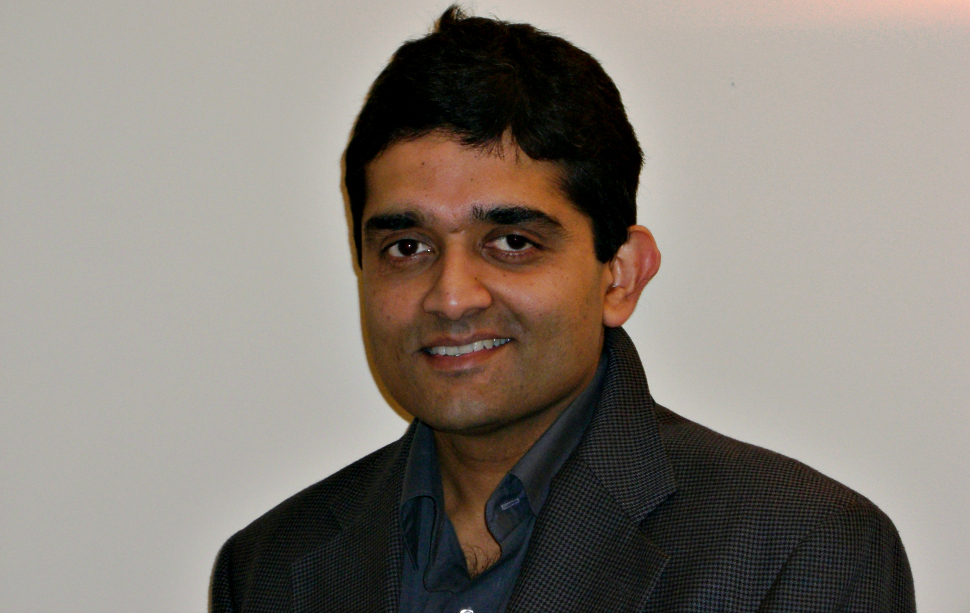Evan F. Moore, February 25, 2017
Dr. Narayan Mandayam, a professor at Rutgers University, wants to make city life run smoother by making it more connected.
That?s the underlying idea behind Mandayam?s work around ?smart cities,? a program that aims to give large cities a technological upgrade, specifically integrating key infrastructures a city needs to function such as internet connectivity, mass transportation, energy and power grids, to name a few.
Mandayam, a distinguished, award-winning professor who is the chairman of Rutgers? Department of Electrical and Computer Engineering in the School of Engineering, knows what happens when these support structures aren?t integrated. When Hurricane Sandy hit New Jersey back in 2012, Mandayam lost power in his home for five days. When a natural disaster or a terrorist attack hits a metro area, it is often difficult for that city to recover. Mandayam?s work would cut down that recovery time.
Mandayam explained the past, present and future of smart cities to BTN LiveBIG.
BTN LiveBIG: What are the key components in the development of future Smart Cities?
Dr. Narayan Mandayam: A smart city is where every device, every entity and every object can connect for whatever the [city] needs.
Not only is everything connected, but renewable energy, green infrastructure and sustainability reign and resilience after breakdowns, disasters and malicious attacks is critical.
Of course, wireless connectivity is the glue that holds everything together. Realizing the vision of truly smart cities requires a synergistic integration of cyber-physical critical infrastructures such as smart grids, wireless communication systems, smart transportation, and smart water systems.
We are also interested in how people interact with the infrastructure in a smart city since any meaningful design ought to be centered around this.
BTN LiveBIG: What was the process of getting this smart cities project off the ground?
Mandayam: The key to this project was bringing together researchers in cyber-physical systems, computer and network science, transportation engineering, security, economics, power systems, wireless networks, and psychology. Fortunately, I have a fantastic collaboration with my Rutgers colleague, Arnold Glass, a renowned expert in cognitive psychology. Similarly, my collaborators at Virginia Tech and Florida International University have had a long term research relationship. Once we put the team together, things came together quite naturally to make a coherent big picture vision for the project.
BTN LiveBIG: Have there been some early successes?
Mandayam: We have made good progress in developing mathematical models to describe the interdependence of critical infrastructure in a smart city setting. We have also undertaken behavioral studies to assess reactions of people to the wording of alerts during emergency situations.
BTN LiveBIG: What has been the reaction to smart cities thus far?
Mandayam: There is a lot of enthusiasm and interest in the concept of engineering smart cities. At the same time, it is understandable that there is a healthy level of skepticism that is around it as well. I think there are a lot of efforts around the world to foster smart cities. Pieces or portions of cities perhaps are smart now. Some homes, for instance, have smart thermostats that increase energy efficiency. But the question is whether you can put all the pieces together holistically.
In the U.S, a smart cities initiative was launched by the Obama administration in 2015. The initiative was to feature research projects that will promote technology collaborations to help communities tackle key challenges. They include reducing traffic congestion, fighting crime, fostering economic growth, managing the effects of climate change and improving city services. That will require securely harnessing data, research and low-cost sensors to ensure safety and privacy.
BTN LiveBIG: How would your work help people across multiple income brackets?
Mandayam: The overarching goal in engineering a smart city is to improve the quality of life in the city and in a larger sense the quality of the planet. When transportation systems, energy systems, computing and communications systems targeting applications such as personal health and well-being all interconnect for greater efficiency, the benefits are available to all people irrespective of their economic status.







